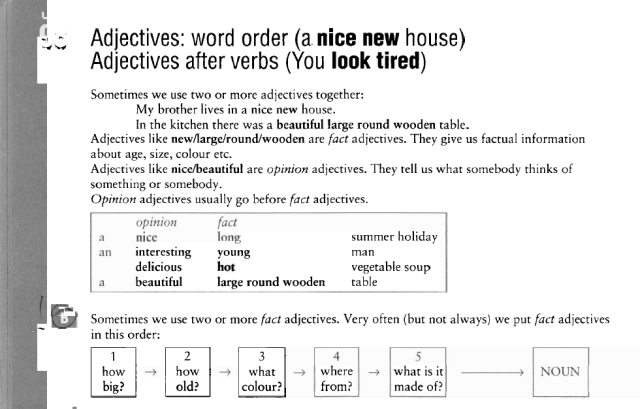咱们搞不懂的语法 老外其实也有点懵逼!

English grammar, beloved by sticklers, is also feared by non-native speakers. Many of its idiosyncrasies can turn into traps even for the most confident users.
坚持细节的人钟爱的英语语法也是非母语者的畏惧之物。甚至对于那些最自信的使用者来说,英语语法的许多特性也会变成陷阱。
But some of the most binding rules in English are things that native speakers know but don’t know they know, even though they use them every day. When someone points one out, it’s like a magical little shock.
然而,英语最具约束力的部分(语法)规则,虽然那些母语使用者们明白这些规则,且天天都使用这些规则,但是他们却并不自知。当某个人指出一条规则的时候,就像有魔力一般,大家都会有点震惊。
This week, for example, the BBC’s Matthew Anderson pointed out a “rule” about the order in which adjectives have to be put in front of a noun. Judging by the number of retweets—over 47,000 at last count—this came as a complete surprise to many people who thought they knew all about English:
比如,这周BBC的马修·安德森指出一条关于顺序的“规则”,也就是形容词必须放在名词之前。根据推特转发量来判断(最后一次统计已超过4万7000次),这对许多以为自己对英语了如指掌的人来说都完全是件意外的事:
That quote comes from a book called The Elements of Eloquence: How to Turn the Perfect English Phrase. Adjectives, writes the author, professional stickler Mark Forsyth, “absolutely have to be in this order: opinion-size-age-shape-colour-origin-material-purpose Noun. So you can have a lovely little old rectangular green French silver whittling knife. But if you mess with that order in the slightest you’ll sound like a maniac.”
那个例子出自《雄辩的要素:如何完美地使用英语短语》这本书。坚持细节的专家马克·福赛斯在书中写道,形容词“当然必须要按照这个顺序来说:意见-尺寸-年龄-形状-颜色-起源-材料-用途名词。所以,你可以有一把古老的产自法国的可爱的绿色矩形银质小削刀。但是如果你打乱一点儿顺序,你听起来就像个疯子。”
Mixing up the above phrase does, as Forsyth writes, feel inexplicably wrong (a rectangular silver French old little lovely whittling green knife…), though nobody can say why. It’s almost like secret knowledge we all share.
就像福赛斯写的那样,把上述短语混在一起使用,莫名其妙地就会觉得错了(一个矩形银质产自法国的古老的小的可爱绿色削刀……),尽管没人能说清到底是为什么。这几乎就像是我们共同分享的隐秘知识。
Learn the language in a non-English-speaking country, however, and such “secrets” are taught in meticulous detail. Here’s a page from a book, published by Cambridge University Press, used regularly to teach English to non-native speakers. An English teacher in Hungary sent it to us.
然而,在一个不讲英语的国家学习这门语言,就会有人详细地教授这类的“秘密”。这是剑桥大学出版社出版的一本书中的一页,常用于教授非英语母语者学习英语。一位匈牙利的英语老师把它发给了我们。

The book lays out the adjective order in the same way as Forsyth’s illumination. Hungarian students, and no doubt those in many other countries, slave over the rule, committing it to memory and thinking through the order when called upon to describe something using more than one adjective.
就像福赛斯阐明的那样,这本书也用了同样的方法列出了形容词的顺序。毫无疑问,匈牙利的学生以及许多其他国家的学生得努力记住这条规则,当他们要用不止一个形容词来描述某个事物的时候,他们就得仔细想想这条规则。
The fact is, a lot of English grammar rules only come as a surprise to those who know them most intimately.
事实上,对于那些非常精通英语的人来说,许多英语语法规则也让他们很意外。